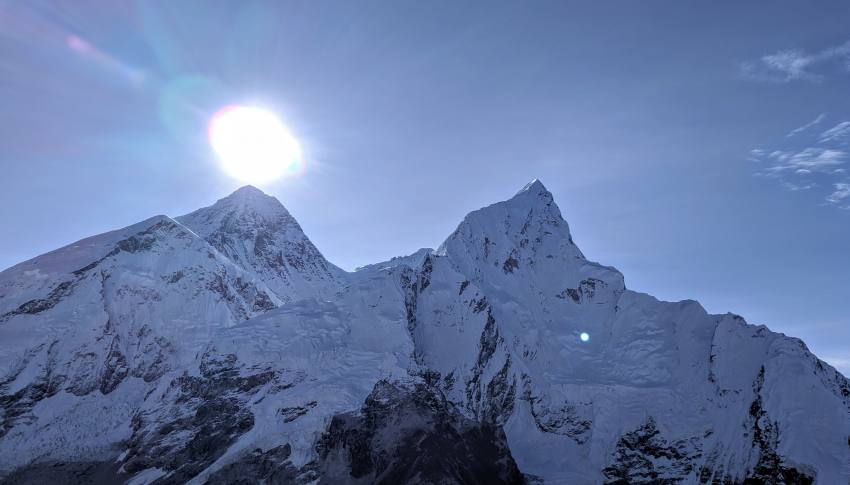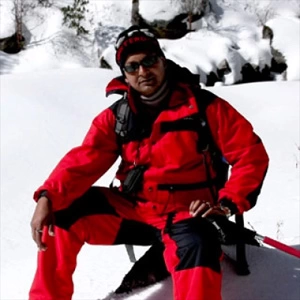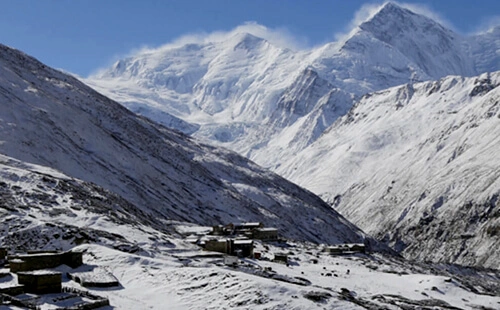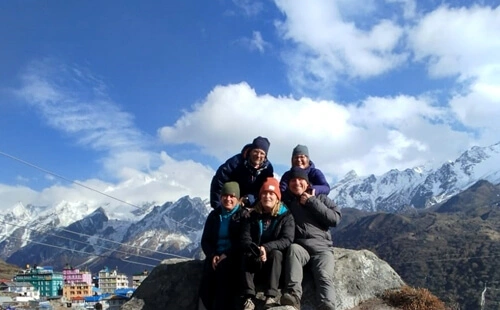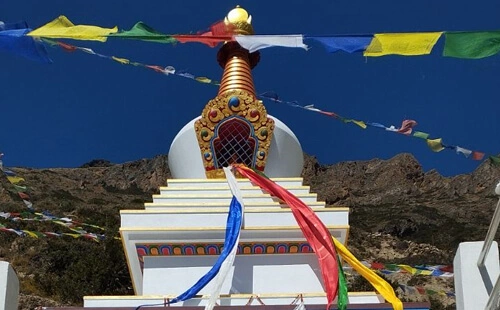The 5 best Everest trekking packages in Nepal
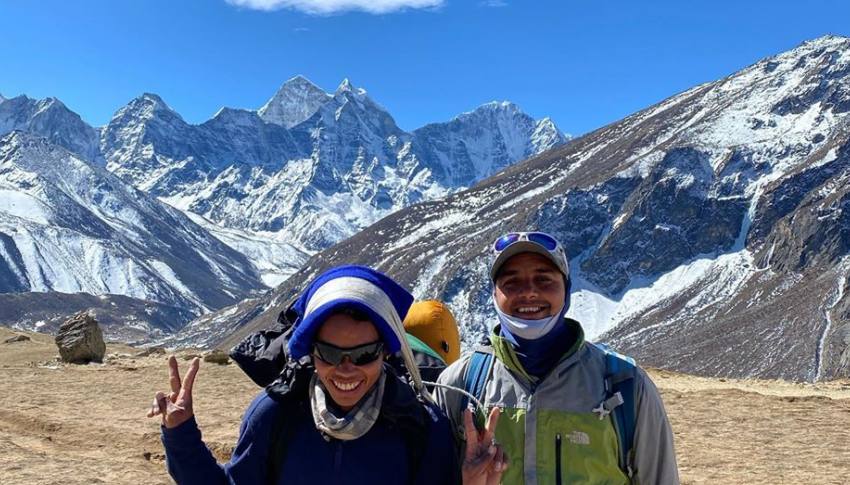
Overview
With Nepal being one of the top countries for any type of trekking vacations or holidays in the world, it’s only natural that we at Adventure HimalayanTravels & Treks decided to let you know all about the 5 best Everest trekking packages in Nepal! The Everest or locally known as the Khumbu region of Nepal houses some of the largest mountains in the world. Inclusive of the highest Mt Everest (8849m), Mt Lhoste (8516m), Mt Cho Oyu (8188m), Mt Gyachung Kang (7952m), Mt Nuptse (7861), & Mt Pumori (7161m).
While not every trek in the Everest region is recommended for amateur trekkers, there are those doable by even beginner trekkers. Based upon your preparation we at Adventure HimalayanTravels & Treks do always suggest to participate in fitness and stamina training. If you have access to high elevations we do also recommend to practice on acclimatizing as well before undergoing a trek in the Everest region. Being well prepared will only increase your experience of trekking between the highest mountains in of the world! With the exception of a few treks, the most common entry point for any trek in the Everest region is at Lukla. This hill side village located at 2840m, is filled with teahouses, shops, and its own airstrip. As a matter of fact, Lukla airport is listed as the 38th highest airport in the world, and only a few designated pilots are allowed to make landings and take-offs here! If you book any type of trek in the Everest region and your itinerary contains a flight to and from Lukla, than we at Adventure HimalayanTravels & Treks do want to recommend to book a few additional days in anticipation of flights delays due to bad weather. This way you won’t have to deal with any type of tension and can just enjoy your holiday in Nepal as should! Trekking in Everest region of Nepal does not only allow you to see the world’s highest mountains but also see the unique Sherpa culture up close, as well as a few yaks. The Sherpa communities in the Everest region have mastered the art of survival at high altitudes and in harsh conditions. Their culture is very open and welcoming, which you’ll discover during your trek.
Find out more about the 5 best Everest trekking packages, further down this article to know all about them, and when the best seasons are to book either one these best treks in the Everest region of Nepal.
The 5 best Everest trekking packages
As you might have guessed there are more than 5 treks in the Everest region but we at Adventure HimalayanTravels & Treks thought it useful for you to know about our 5 best Everest trekking packages based upon popularity, and availability. We’ll layout each trek’s itinerary, and some useful info for trekking into the Everest region as well.
The 5 best Everest trekking packages according to Adventure Himalayan Travels & Treks:
- Everest Base Camp to Kalapatthar trek
- Everest Base Camp and back to Lukla by helicopter trek
- Everest Panorama trek
- Everest Base Camp and Gokyo trek with Cho La pass
- Everest Base Camp and Gokyo Lakes trek (with 3 high passes)
Everest Base Camp to Kalapatthar trek:
The Everest Base Camp to Kalapatthar trek of 11 days is the most popular and standard trekking package you can get for the Everest region. As the name suggests, this trek goes straight for Everest Base Camp (5364m) and holds a sunrise hike up to Kalapatthar hill (5545m) overlooking Mt Everest and its neighbors. Suitable for young and old, the Everest Base Camp to Kalapatthar trek can be done without any prior trekking experience and holds one acclimatization day at Namche Bazaar (3440m). In this itinerary we have not included an arrival and departure day so keep that in mind.
The itinerary:
Day 01: Flight to Lukla (2840m), and trek to Phakding (2610m)
Day 02:Trek to Namche Bazaar (3440m)
Day 03:Rest day (for acclimatization and exploration)
Day 04:Trek to Tengboche (3860m)
Day 05:Trek to Dingboche (4410m)
Day 06:Trek to Lobuche (4910m)
Day 07:Lobuche to Gorakshep (5170m), and hike to Everest Base Camp (5364m)
Day 08: Trek to Kalapatthar (5545m) and back to Pheriche (4280m)
Day 09:Trek to Namche Bazaar(3440m)
Day 10:Trek to Lukla (2840m)
Day 11:Flight to Kathmandu
To see more info about the Everest Base Camp to Kalapatthar trek organized by Adventure HimalayanTravels & Treks than visit; https://www.adventurehimalayantravels.com/everest-base-camp-to-kalapatthar-trek.
Useful info during the Everest Base Camp to Kalapatthar trek:
Trekking to Everest Base Camp is definitely worth scratching of your bucket list, and while this trek can be done by non-experienced trekkers we do recommend to improve your stamina by building up your fitness. The teahouses during the Everest Base Camp to Kalapatthar trek offer a wide variety of drinks and foods, we do give the valuable info to refrain from ordering any alcoholic drinks before heading out on a trek, as this will greatly affect your performance and has resulted in unsuccessful treks. During this trek the main highlight will be visiting Everest Base Camp and a hike up to Kalapatthar hill the next morning. Do charge your head torches and cameras, as that morning we’ll start to hike up during the dark morning before sunrise.
Everest Base Camp and back to Lukla by helicopter trek
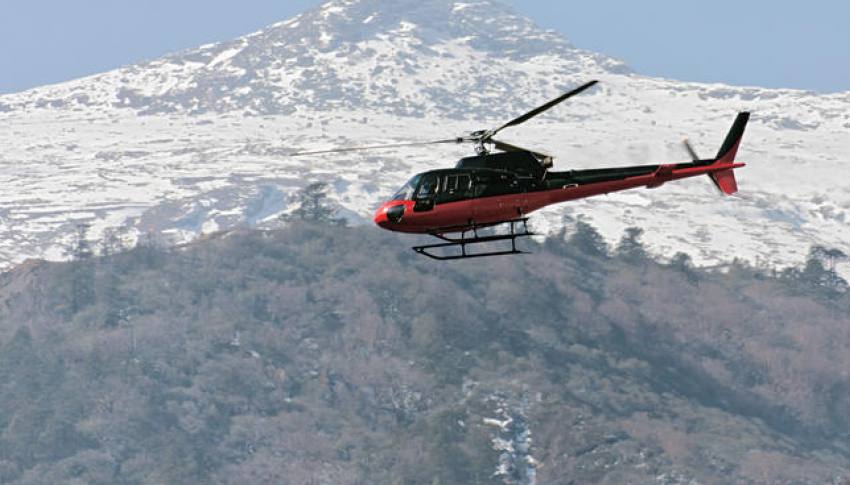
Similar to the classical Everest Base Camp trek, the Everest Base Camp and back to Lukla by helicopter trek, is a special edition! With the added luxury of flying back to Lukla instead of retracing your trail back down you’ll not only save a few days but also get to see your entire progress from the relaxing seat of a helicopter. And as added bonus you’ll get to see different Himalayan sceneries from a bird’s eye view! The trek itself is quite the same as the standard Everest Base Camp to Kalapatthar trek but holds an extra acclimatization day at Dingboche (4360m). Flying back to Lukla instead of trekking means also that this trek to Everest Base Camp is less strenuous and easier going.
The itinerary:
Day 01:Arrival in Kathmandu
Day 02: Flight to Lukla (2840m), and trek to Phakding (2610m)
Day 03: Trek to Namche Bazaar (3440m)
Day 04:Rest day (for acclimatization and exploration)
Day 05: Trek to Tengboche (3867m)
Day 06:Trek to Dingboche (4360m)
Day 07:Rest day in Dingboche for acclimatization (4360)
Day 08:Trek to Lobuche (4940m)
Day 09:Lobuche to Gorakshep (5170m), trek to Everest Base Camp (5364m)
Day 10: Trekking to Kalapatthar (5545m), fly back to Lukla via helicopter
Day 11:Flight to Kathmandu
Day 12:Departure from Kathmandu
To see more info about the Everest Base Camp and back to Lukla by helicopter trek organized by Adventure HimalayanTravels & Treks than visit;https://www.adventurehimalayantravels.com/everest-base-camp-and-back-to-lukla-by-helicopter.
Useful info during the Everest Base Camp and back to Lukla by helicopter trek:
As this trek is quite similar than the standard EBC trek, we at Adventure HimalayanTravels & Treks do find that some other useful info during the Everest Base Camp and back to Lukla by helicopter trek can be mentioned. While you’ll be trekking higher and higher each day it is important to always watch your stamina and consult your trekking guide in cases of heavy fatigue. There is no shame in taking an extra rest, the main priority is safety. Always keep hydrating and protect yourself from the elements. The helicopter at the end is something to look forward to as an extra reward for reaching Everest Base Camp successfully and provides an element of luxury as well to the trip.
Everest Panorama trek
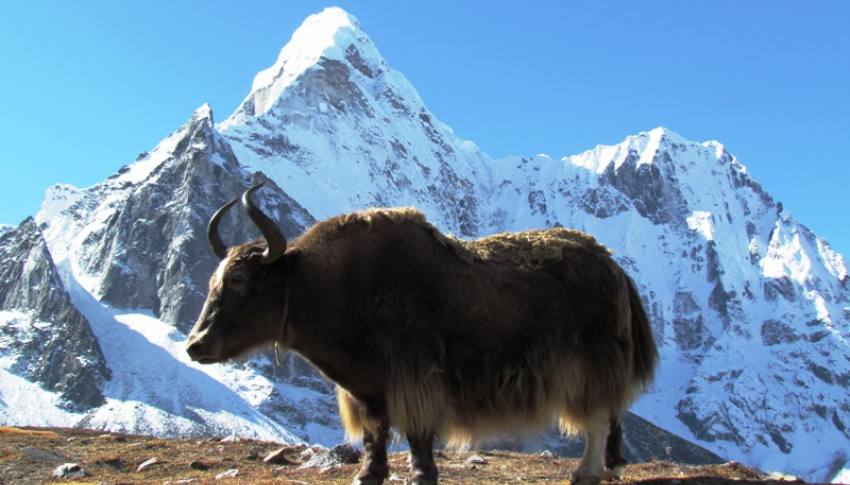
The Everest Panorama trek is one of Nepal’s most popular short treks as well as the most popular short trek of the Everest region! With only 6 days of trekking you can explore some of the most prominent parts of the Everest region. Unfortunately the Everest Panorama trek does not go all the way up to Everest Base Camp but explores more around the Khumjung region which is said to house a real Yeti skull! This trek is all about the views of Mt Everest and discovering the Sherpa culture by visiting local and remote mountain villages and Sherpa communities. Some of the mountains that you can expect to see during the Everest Panorama trek include; Mt Everest (8849m), Mt Lhoste (8516m), Mt AmaDablam (6812m) and Mt Thamserku (6608m).
The itinerary:
Day 01:Arrival in Kathmandu
Day 02: Flight to Lukla (2840m), and trek to Phakding (2610m)
Day 03: Trek to Namche Bazaar (3440m)
Day 04:Rest day (for acclimatization and exploration)
Day 05:Trek to Thame (3800m)
Day 06: Trek to Khumjung (3780m)
Day 07: Trek to Tengboche (3867m)
Day 08:Explore Tengboche, return to Monjo (2850m)
Day 09:Back to Lukla (2652m)
Day 10:Flight to Kathmandu
Day 11:Departure from Nepal
To see more info about the Everest Panorama trek organized by Adventure HimalayanTravels & Treks than visit; https://www.adventurehimalayantravels.com/everest-panorama-trek.
Useful info during the Everest Panorama trek:
During this trek in the Everest region of Nepal you’re sure to run in to yaks on the trails. These encounters can get dangerous and it’s always important to stand on the correct side of the trail when a yak caravan comes true. It’s also fascinating to witness! During the Everest Panorama trek you’ll get to visit two special Buddhist Monasteries, one at Khumjung, and one at Tengboche. Here you can see the monks attending their prayers and devotion as well as enjoying the breathtaking sceneries of the Everest Himalayas!
Everest Base Camp and Gokyo trek with Cho La pass
Known as the most rewarding trek in the entire Everest region, the Everest Base Camp and Gokyo trek with Cho La Pass can be strenuous but is definitely worth it! This amazing trek heads through the Everest region from West to East. The first part of the trek goes for the most part along the DudhKhosi River heading up to the Holy Gokyo Lakes. The biggest lake at Gokyo (4800m) is absolutely pristine. Surrounded by mountains and being fed from a glacier this turquoise Himalayan Lake is one of the main highlights during the Everest Base Camp and Gokyo trek with Cho La Pass! A morning hike up to GokyoRi (5357m) allows for a 360° panoramic view of the entire Himalayas. The trek continues with a crossing of the Cho La Pass (5367m) connecting the northern western and eastern Everest regions together. After descending the trail merges with the standard Everest Base Camp trek and we intent to follow it up to Base Camp (5364m). The rest of the trek follow the same route as the EBC trek back to Lukla following the route south from Periche back to Namche Bazaar and ultimately back to Lukla.
The itinerary:
Day 01:Arrival in Kathmandu
Day 02:Free day or Sightseeing in Kathmandu
Day 03: Flight to Lukla (2840m), and trek to Phakding (2610m)
Day 04: Trek to Namche Bazaar (3440m)
Day 05:Rest day (for acclimatization and exploration)
Day 06:Namche Bazaar to PhortseThanga (3680m)
Day 07:PhortseThanga to Machhermo (4470m)
Day 08:Machhermo to Gokyo (4800m)
Day 09:Acclimatization Day - Optional Hike to GokyoRi (5357m)
Day 10:Gokyo to Thagnak (4750m)
Day 11:Thagnak to Cho La pass (5367m) to Dzongla
Day 12:Dzongla to Lobuche (4940m)
Day 13:Lobuche to GorakShep (5170m), trek to Everest Base Camp (5364m)
Day 14:Gorakshep to Kala Patthar (5545m) to Pheriche (4280m)
Day 15:Pheriche to Namche Bazaar
Day 16:Namche Bazaar to Lukla (2850m)
Day 17:Lukla to Kathmandu By flight
Day 18:Departure!
To see more info about the Everest Base Camp and Gokyo trek with Cho La pass organized by Adventure HimalayanTravels & Treks than visit; https://www.adventurehimalayantravels.com/everest-base-camp-and-gokyo-trek-with-cho-la-pass-18-day.
Useful info during the Everest Base Camp and Gokyo trek with Cho La pass:
Did you know that the Gokyo Lakes are the world’s highest freshwater lakes and its largest lake, Thonak Lake is where we’ll be overnighting during the Everest Base Camp and Gokyo trek with Cho La pass! At the top of GokyoRi you’ll be able to see even views of Mt Makalu (8463m) and of course Mt Everest (8849m). This trek can be more strenuous than other treks to Everest Base Camp and we at Adventure HimalayanTravels & Treks strongly recommend to practice for this trek in advance to enjoy it to the fullest!
Everest Base Camp and Gokyo Lakes trek (with 3 high passes)
The Everest Base Camp and Gokyo Lakes trek (with 3 high passes) might as well be the toughest trek in the entire Everest region! Following a similar route as the Everest Base Camp and Gokyo trek with Cho La pass. The Everest Base Camp and Gokyo Lakes trekcircuits the Everest region in a counter-clockwise direction, facing 3 high altitude Himalayan passes. The Kongma La pass (5535m), the Cho La pass (5368m), and the Renjo La Pass (5360m). Crossing these three passes is quite a challenge and so this trek is also not recommended for novice trekkers. While the views during the Everest Base Camp and Gokyo Lakes trek are absolutely breathtaking so are the trails. You’ll be heading over mountain ridges, through jungles and barren terrain, and navigating up and down going trails. Once you have completed this trek you’ll have the bragging rights of trekking through the entire Everest region and conquering its three high passes!
The itinerary:
- Day 01:Arrival in Kathmandu
- Day 02: Flight to Lukla (2840m), and trek to Phakding (2610m)
- Day 03: Trek to Namche Bazaar (3440m)
- Day 04:Rest day (for acclimatization and exploration)
- Day 05: Trek to Tengboche (3867m)
- Day 06:Trek to Dingboche (4360m)
- Day 07:Rest day in Dingboche for acclimatization (4360)
- Day 08:Dingboche to Lobuche (4930m) via Kongma La pass (5535m)
- Day 09:Lobuche to GorakShep (5170m), trek to Everest Base Camp (5364m)
- Day 10:Gorakshep to Dzongla (4850m)
- Day 11:Dzongla to Gokyo (4800m) via Cho La pass (5368m)
- Day 12:Rest day in Gokyo or Climb GokyoRi (5357m)
- Day 13:Gokyo to Lumden village (4650m) via Renjo La Pass (5360m)
- Day 14:Lumden Village to Namche Bazaar
- Day 15:Namche Bazaar to Lukla (2850m)
- Day 16:Lukla to Kathmandu by air (1360m)
- Day 17:Departure!
To see more info about the Everest Base Camp and Gokyo Lakes trek (with 3 high passes)organized by Adventure HimalayanTravels & Treks than visit;https://www.adventurehimalayantravels.com/everest-base-camp-and-gokyo-lakes-with-3-high-passes-17-day.
Useful info during the Everest Base Camp and Gokyo Lakes trek (with 3 high passes):
It’s crucial to mentally and physically prepare for the Everest Base Camp and Gokyo Lakes trek (with 3 high passes)! This trek is very demanding and requires a lot of persistence and stamina to complete. Despite of that, this trek is also considered to be the most rewarding. You’ll have daily chances to see some of the highest Himalayan peaks and mountains of the world. And every day is a new adventure! A useful tip is to not skip any acclimatization days as the chances to get AMS during this trek are higher than others. You’ll be fine as long as you keep acclimatizing at the designated spots!
Accommodation in the Everest region
Accommodation during any type of trek plays a vital role in your overall experience. All villages on major trekking destinations in the Everest region are filled with charming and comfortable tea houses. With WIFI access and charger outlets these tea houses serve as important bases during your trek! Some villages such as Lukla and Namche Bazaar even offer resorts with a higher luxury standard. In our opinion these resorts tent to be overpriced and the standard tea house is just fine during a trek. The rooms are fitted with either two or three single person beds with matrass and blankets. It is our experience that you might want to bring your own sleeping bag for that extra layer of warmth and comfort. Toilets are mostly public and warm water can be ordered. Sleeping in a tea house is obviously not the same as sleeping in a hotel. The standards are much lower but then again you are staying in a remote Himalayan mountain village!
Food in the Everest region
Every trekker knows that food is an important aspect of each trek. You’ll need to replenish carbs, and protein after trekking a whole day on rough terrain! Luckily the Nepalese are well famed for their delicious dishes, and that is no different for the mountain villages that you’ll pass by during a trek in the Everest region. Trekkers will be happy to hear that in tea house you can order a wide variety of dishes varying from local to international. We at Adventure HimalayanTravels & Treks though it easier to show you with a list what type of meals you can get during a trek in the Everest region;
Nepalese or local dishes:
- Bread
- Tibetan or Chapati (dry bread) with cheese
- Nepalese dhal bhat (traditional cooked rice with lentil soup)
- Momo (a plate of Nepalese dumplings)
- Tibetan or Chapatti bread
- Thukpa (a steaming hot bowl of noodle soup)
- Yak steak
- Seasonable soups
- Rice with curry
- Sherpa stew (a delicious bowl of vegetable soup made with local wheat pasta)
International dishes:
- French toast with either jam, honey or peanut butter
- Eggs 3 ways: scrambled, fried or boiled
- Hashed browned potatoes
- Corn flakes
- Pancakes
- Seasonable vegetables
- Sandwiches
- Steak
- Spring rolls
- Pizza
- Burgers
- Pastas
As you can see the list is long, and there will definitely be something on the menu that’s just good for you. We do recommended the Nepalese dumplings called momo or the famous Sherpa stew if available. Depending on the elevation of your trek it is possible that some tea houses have limited means to preserve meat items, as so we do advice to not order any such items at high elevation, as an upset stomach can break your trek!
What to bring during a trek in the Everest region
Besides food and accommodation the gear that you’ll bring during a trek in the Everest region will also play a vital role in your overall trekking experience! Being prepared is just common sense before going on any trek. But if it’s your first time trekking you might want to know in advance what to bring. Now as Nepal is famous for its treks it’s only natural that most shops are filled with trekking gear for sale or rent. So if you do miss out on anything you are sure to find it at Kathmandu’s Thamel. Have a look at this list to see what you might want to pack for a trek in the Everest region of Nepal.
What to bring:
- A few pair of thermal underclothes
- Fleece jacket or pullover
- A wind and water proof jacket
- Down jacket
- Woolen gloves
- Comfortable hiking socks
- Standard trekking poles
- Water purification item(s)
- Cap or scarf to protect from the sun
- Toiletries
- A head light
- Washing towel
- Laundry bag
- 2 pairs of trekking pants
- A small lock for your backpack (safety first)
- A rain poncho (optional and depending the season)
- Personal basic first aid kit
- Trekking boots with spare laces
Having these items checked from your list you are sure to get the best experience during your trek through the Everest region. If you bring any type of electronics that require charging we do suggest to bring extra batteries and adapters.
Best seasons to do the Everest Base Camp to Kalapatthar trek:
As most treks in Nepal the highest recommended seasons to do the Everest Base Camp to Kalapathhar trek are either during the spring or fall season. These both seasons are also called the high seasons for trekking in Nepal as the weather will be clear and the views breathtaking. Although it is possible to book the Everest Base Camp to Kalapatthar trek during the low seasons, with the exception of the monsoon season (June-September) we do recommend to book either between March to May and October to November to get the best experience out of these 5 best Everest trekking packages!
